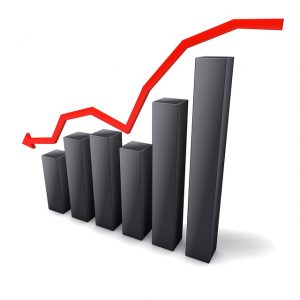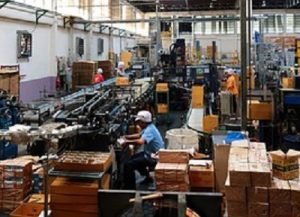Is Another RBA Rate Cut Imminent?
At the October meeting, the RBA decided to leave the cash rate unchanged at 2.0 percent. In its Monetary Policy Statement, the board essentially gave three reasons for the decision. Here’s my interpretation:
- We can’t raise rates because China continues to show signs of weakness, which means less demand for our key exports. We need a weak dollar to remain competitive globally.
- While an even weaker dollar would be helpful, there’s no need to lower rates again just yet, because the Federal Reserve will likely begin raising rates in the U.S. soon. This should further devalue our currency.
- There’s no harm in keeping interest rates at current levels, because inflation seems to be contained. Even though we’re increasing our money supply, things don’t seem to be getting more expensive yet. Real estate is the exception, but regulators stand ready.
 In summary, The RBA believes our sputtering economy definitely can’t handle higher rates and a stronger Aussie dollar. An even weaker dollar would be beneficial, but lowering rates to achieve that could be problematic, as inflation could get out of control.
In summary, The RBA believes our sputtering economy definitely can’t handle higher rates and a stronger Aussie dollar. An even weaker dollar would be beneficial, but lowering rates to achieve that could be problematic, as inflation could get out of control.
So fingers crossed, the Fed will raise rates soon.
There’s only one problem. Apparently the U.S. economy is not as strong as originally hoped.
Since the beginning of the year, economists were widely anticipating a Fed rate hike in September. The Board of Governors were hinting at it for months. Many believed that since there hadn’t been a rate rise in nine years, surely it was time. Even Janet Yellen herself hinted at a September rate rise as recently as July.
But last month, the Fed left the federal funds rate on hold at zero percent.
Then again this month, no love from the Fed. The federal funds target remains at zero.
Think about that for a moment. The United States Federal Reserve Board, after seven years of zero percent interest rates and an additional US$3.5 trillion dollars pumped into the economy through “quantitative easing,” still did not feel optimistic enough about the economy to raise interest rates a mere 25 basis points.
What does that say about the state of affairs across the Pacific?
Four months ago, I offered three reasons why any U.S. interest rate rise would be purely symbolic. Those reasons were primarily related to the debt and equity markets. Now it seems the most recent economic indicators are in agreement.
Here are three reasons why the U.S. Federal Reserve probably won’t raise rates anytime soon, and why an RBA rate cut just became a whole lot more likely:
1. The September Jobs Report Was Dismal
Economists were expecting the latest U.S. Nonfarm Payrolls Report to show the creation of 203,000 jobs. Instead, the economy created only 142,000 new jobs.
 The Fed keeps a close eye on labour data. In fact, one of the stated responsibilities of the reserve bank is the “pursuit of full employment.” Because the unemployment rate has been steadily declining, all indications were that the work force was strengthening. This has led many to believe that U.S. interest rates would soon be on the rise.
The Fed keeps a close eye on labour data. In fact, one of the stated responsibilities of the reserve bank is the “pursuit of full employment.” Because the unemployment rate has been steadily declining, all indications were that the work force was strengthening. This has led many to believe that U.S. interest rates would soon be on the rise.
However, a little known fact is that the unemployment numbers have been improving, primarily because the U.S. is now experiencing the lowest labour force participation rate in 40 years.
Currently, the total number of people in the workforce is only 62.6 percent of the overall population. This illustrates that the wrong side of the equation is changing.
It’s true that the official unemployment rate in the U.S. is 5.1 percent, which sounds pretty good. But this figure includes only those people who are without jobs, and have been actively looking for work within the past four weeks. It doesn’t count the lazy or discouraged people who have stopped looking.
The Bureau of Labor Statistics’ (BLS) broadest unemployment measure is a much bleaker 10 percent. This figure includes those who are too discouraged to look for work, but who have at least looked for a job in the past year. It also includes those people forced to work part-time, because they cannot find full-time employment.
Some economists believe the true unemployment rate is much higher. When you include long-term discouraged workers who have not bothered to look for a job in over a year, the unemployment rate is as high as 23 percent.
It’s interesting to note that prior to 1994, the long-term discouraged people were included in the BLS broad unemployment measure. The problem with keeping them in the equation is that 23 percent sounds a lot worse than 10 percent. Politicians and regulators prefer to keep things upbeat and looking rosy.
Also keep in mind that the strength of the economy is not only the quantity of jobs that are being created, but also the quality of those jobs. This New York Times article gives some insights into exactly what kind of jobs are being created in the United States.
2. Factory Orders Declined for the Tenth Month in a Row
 Economists expected U.S. factory orders to drop by 1.2 percent in August. The actual figure was even worse, a 1.7 percent decline.
Economists expected U.S. factory orders to drop by 1.2 percent in August. The actual figure was even worse, a 1.7 percent decline.
The monthly Factory Orders Report measures the overall health of the nation’s manufacturing sector, and is closely tied to employment. The report takes into consideration new factory orders, current inventories, total shipments and any unfulfilled orders yet to be processed.
The August numbers represent not only the tenth declining month in a row, but also the biggest drop since December 2014. The only other times in history that factory orders have dropped 10 months in a row was when the U.S. was in a recession.
A strong manufacturing base in an economy is crucial. A nation that wants to consume, must also be a nation that produces. Of course, someone has to produce what’s being consumed, so if it’s not produced at home, those goods must be imported from overseas.
This in effect means that manufacturing jobs are moved offshore, resulting in higher unemployment at home. The new jobs that are being created tend to be in the services sector. As I mentioned before, the strength of an economy is not only the quantity of jobs being created, but also the quality of the jobs.
3. The Trade Deficit Swelled Last Month
 Economists expected the United States trade deficit to increase to $47.40 billion in August. Instead, the figure came in considerably higher, at $48.33 billion.
Economists expected the United States trade deficit to increase to $47.40 billion in August. Instead, the figure came in considerably higher, at $48.33 billion.
The trade balance is simply a calculation of the nation’s exports, minus its imports. A trade deficit exists when a nation imports more than it exports.
In the case of the United States, an increasing trade deficit is not surprising, given the diminishing of the country’s manufacturing base. Again, when goods in demand aren’t manufactured at home, they must be imported from overseas.
The report revealed that U.S. exports surpassed imports with South and Central America, but there were deficits with China, the EU and Canada. The highest deficit is with China, which increased to more than $4 billion last month.
Australia is currently having the same balance of trade problem, which is why the RBA wants a weak dollar in the first place. A weaker currency makes our goods less expensive to those overseas, which means more people will want to buy them.
Just like our reserve bankers believe a strong Aussie dollar is bad for our economy, the Fed will be just as concerned about a strong U.S. dollar. The U.S. trade deficit is worsening because the U.S. dollar has strengthened massively over the past 18 months. This makes U.S. goods more expensive to the rest of the world, which means fewer people will want to buy them.
Just this week, the euro tumbled against the greenback after Mario Draghi hinted at further easing by Europe’s central bank. China also cut interest rates and loosened capital controls just days ago. These global currency wars are further damaging U.S. competitiveness.
If the Fed were to raise rates, it could make the U.S. dollar even stronger, which would further exacerbate this trade balance problem. This is the primary reason a Fed rate hike anytime soon is highly unlikely, no matter what Janet Yellen says.
What Does It Mean For Investors?
 These three economic indicators all point to the likelihood that the Fed’s hands will remain tied when it comes to raising interest rates. Today’s announcement was simply a confirmation of this.
These three economic indicators all point to the likelihood that the Fed’s hands will remain tied when it comes to raising interest rates. Today’s announcement was simply a confirmation of this.
If our own reserve bank doesn’t get a boost from the Fed in devaluing the Aussie dollar, another rate drop at home is practically inevitable. Whether it’s next week, next month or next year, it’s coming.
Two weeks ago, Westpac raised mortgage rates across it’s entire mortgage book. The other major banks soon followed. Some see this as further evidence that an RBA rate cut is imminent.
If the economic landscape continues to deteriorate in the U.S., the Fed can’t lower interest rates any further, unless it follows Europe’s lead and goes negative. While that is possible, the other option would be a fourth round of quantitative easing, also known as money printing. This would put huge pressure on the RBA to continue lowering rates. Forget 1.75, because in that scenario, we could see a sub-one percent cash rate.
Lower rates here at home will encourage continued speculation by investors, and we may see asset prices surge higher, especially in the share market. This could make future corrections all the more dramatic and painful when the easy money train finally runs out of steam.
What about real estate? Expect any further easing by the RBA to be met with equal force from APRA to preclude inflation in the property market. How our regulators navigate this little real estate conundrum should be quite interesting to watch.
The majority of our readers believe that the greatest threat to Australia’s prosperity is economic trouble overseas. While most of them expect our woes to originate with China, we shouldn’t underestimate the significance of the United States. The global economy is highly interwoven, and fiscal and monetary policy in one nation can have a profound impact around the world.
What do you think? Will the RBA cut the cash rate again next week?
If so, will the banks pass the discount on to borrowers?
What would lower interest rates mean for our property market?
Comments
Got something to say? Post a comment...
You must be logged in to post a comment.





Thanks Jason. There is no doubt that most Australian institutions have already factored a coming rate cut. It seems there is little push back at the moment at large from consumers…however savvy borrowers are getting itching feet and “exit visas are imminent” for many. Plenty of lenders in the non bank sector to pick up the business.
* Banks increase rates.
* RBA lowers rates.
* Banks don’t pass on the reduction.
* Banks pocket the now double-difference.
* Nothing much changes.
Forgot to add:
* RBA rate reduction = banks soon afterwards lower interest paid out on savings. So actually pocket triple difference.
Someone remind me again why bank execs are permitted to work at the RBA!?
It ain’t called the Reserve BANK of Australia for nothing.
I hope the RBA doesn’t lower rates, the Aust economy is doing just fine.
No need to throw gas on the fire.
This being said I expect Yellen to raise 0.25% in Dec. Basically saying skidded in” and keep face, otherwise markets will go haywire on expectation.
The Fed hinting at a December rate rise may have bought the RBA another month at 2 percent. But when the markets wake up to the reality that the Fed may never raise rates, I’d say another rate drop here is inevitable. Unless of course by some miracle the RBA board changes their entire monetary paradigm and decides that a low cash rate is the very thing destroying our economy long-term. We can only hope!
Update: The October jobs report was much stronger than expected. The markets and the media have responded in expectation of a December rate rise by the Fed.
But bear in mind…
– While the October report was strong, it only made up for the two previous months of lower than expected numbers. There’s been no net improvement in the job participation rate.
– The vast majority of the jobs being added continue to be low quality, low paying jobs.
– Strong employment alone will not equal a rate rise. The Fed will be watching the low inflation rate closely. With such a strong dollar, it’s very risky to raise rate.
If they raise rates and then have to lower them again in coming months, that would be a major embarrassment for the Fed and the markets would freak out.
Time will tell, but my money’s on no rate hikes and more easing from the Fed early next year.